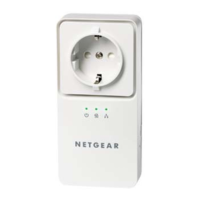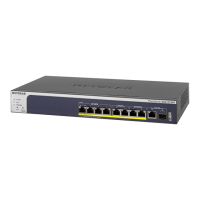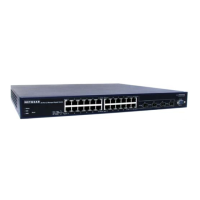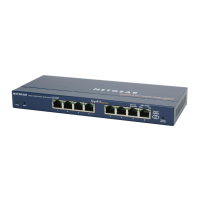Port authentication
With port-based authentication, if 802.1X is enabled both globally and on the port,
successful authentication of any one supplicant attached to the port results in all users
being able to use the port without restrictions. At any time, only one supplicant is allowed
to attempt authentication on a port in this mode. Ports in this mode are under
bidirectional control. 802.1X is the default authentication mode. 802.1X is also referred
to as dot1x.
An 802.1X network includes three components:
•
Authenticator: The port that is authenticated before access to system services is
permitted.
•
Supplicant: The host that is connected to the authenticated port requesting access
to the system services.
•
Authentication server: The external server, for example, the RADIUS server that
performs the authentication on behalf of the authenticator, and indicates whether
the supplicant is authorized to access system services.
For port authentication to function, you must configure at least one RADIUS server (see
RADIUS servers on page 66).
Manage port authentication for individual
ports
After you enable 802.1X port authentication globally, the default port authentication
mode on the ports is Auto.
However, before you enable 802.1X access authentication globally (see Manage 802.1X
authentication on page 64), manually set the port authentication mode of the uplink
port or ports to Authorized to enable the switch to keep its network connection and, if
applicable, Internet connection.
To assign a port authentication mode to individual ports:
1. Launch a web browser.
2.
In the address field of your web browser, enter the IP address of the switch.
The login page displays.
3.
In the Login Name field, enter admin as the user name, in the Password field, enter
your local device password, and click the AV UI Login button.
Audio Video User Manual63Security
AV Line of Fully Managed Switches M4250 Series
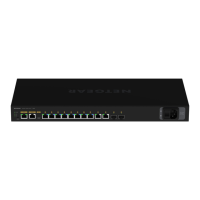
